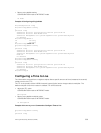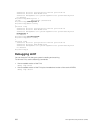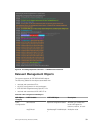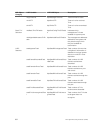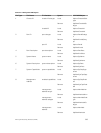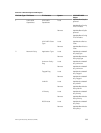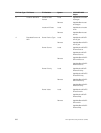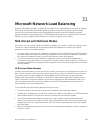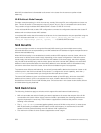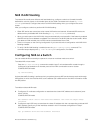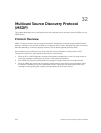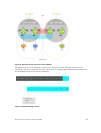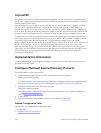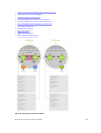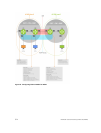31
Microsoft Network Load Balancing
Network Load Balancing (NLB) is a clustering functionality that is implemented by Microsoft on Windows
2000 Server and Windows Server 2003 operating systems. Microsoft NLB clustering allows multiple
servers running Microsoft Windows to be represented by one MAC and one IP address to provide
transparent failover and load-balancing. The Dell Networking OS does not recognize server clusters by
default; you must configure NLB functionality on a switch to support server clusters.
NLB Unicast and Multicast Modes
On a switch, you can configure NLB functionality to operate in two modes: unicast and multicast mode.
The server-cluster IP address and the associated cluster MAC address are configured in the NLB
application running on the Windows Server.
• In unicast mode, when the server IP address is resolved to the MAC address using the ARP application,
the switch determines whether the ARP reply obtained from the server is of an NLB type. The switch
then maps the IP address (cluster IP) with the MAC address (cluster MAC address).
• In multicast mode, the cluster IP address is mapped to a cluster multicast MAC address that is
configured using the static ARP CLI configuration command. After the static NLB entry is configured,
the traffic is forwarded to the subset of ports configured for the VLAN that corresponds to the cluster
virtual IP address.
NLB Unicast Mode Example
Consider a sample topology in which four servers, namely S1 through S4, are configured as a cluster or a
farm. This set of servers is connected to a Layer 3 switch, which in turn is connected to the end-clients.
The servers contain a single IP address (IP-cluster address of 172.16.2.20) and a single unicast MAC
address (MAC-Cluster address of 00-bf-ac-10-00-01) for load-balancing. Because multiple ports of a
switch cannot learn a single MAC address, the servers are assigned with MAC addresses of MAC-s1 to
MAC-s4) respectively on S1 through S4 in addition to the MAC cluster address. All the servers of the
cluster belong to the VLAN named VLAN1.
In unicast NLB mode, the following sequence of events occurs:
• The switch sends an ARP request to resolve the IP address to the cluster MAC address.
• The NLB server responds with an ARP reply containing the MAC cluster address in the ARP header and
a MAC address of MAC-s1/s2/s3/s4 (for servers S1 through S4) in the Ethernet header.
• The switch associates the IP address with the MAC cluster address with the last ARP response it
obtains. Assume that in this case, the last ARP reply is obtained from MAC-s4.(assuming that the ARP
response with MAC-s4 is received as the last one). The interface associated with server, S4, is added
to the ARP table.
• After the NLB ARP entry is learned on a switch when NLB enabled, all subsequent traffic is flooded on
all ports in VLAN1.
Microsoft Network Load Balancing
567



